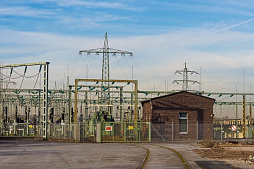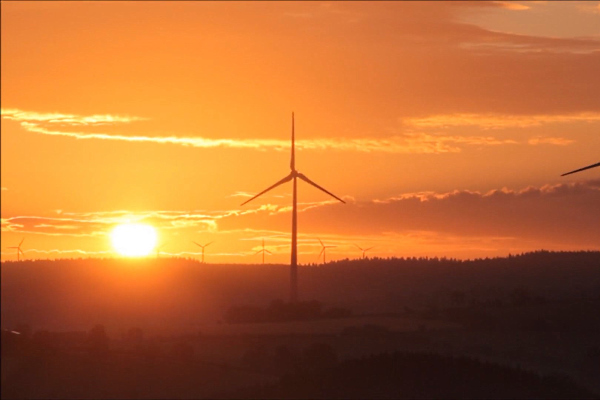After receiving the necessary documents (application form and project presentation), our team will try to review your request as soon as possible, and leading experts will offer the best options for project funding.
With the aim of providing reliable and predictable renewable energy, this huge $3 billion investment project is set to revolutionize the energy landscape in India by supplying electricity to consumers throughout the country.
ESFC Investment Group specializes in providing large-scale loans for investment projects in the energy sector. By leveraging their expertise, ESFC international expert team supports customers in accessing the necessary capital for their ambitious energy projects while ensuring their financial viability and sustainability.
If you are looking for project finance or a private investment loan, please contact us for details.
Combined solar, wind and hydropower projects: theory and practice
Combined renewable energy projects that incorporate solar, wind, and hydropower have a strong theoretical basis on the concepts of diversification, synergy, and reliability.The main idea of this kind of investment is to bring together different renewable energy sources to create a well-rounded and continuous energy supply. In fact, this combination make RES projects self-sufficient systems capable of effectively regulating generation and balancing the power grid.
This promising versatile approach recognizes that solar power is strongest during the day, wind power can be harnessed day and night, and hydropower provides a stable and flexible energy source for balancing the power grid, regardless of the weather and time of day. Hydropower acts as a buffer, storing excess energy during peak generation periods and supplying it during times when solar or wind natural resources are scarce. By combining these technologies, energy companies can ensure a more consistent and reliable power generation.
As renewable energy technologies have advanced for the last couple of decades, so too have the practical applications of combined RES investment projects. Initially, solar, wind, and hydropower facilities were usually built and financed separately, with rare exceptions, focusing on their specific advantages.
However, the recognition of the benefits of combining these sources has led to larger-scale investments that harness the strengths of each approach. These projects are implemented in regions with suitable resources, such as tropical coastal areas with ample wind and solar potential.
Real-world examples serve as evidence of the success of combined renewable energy projects. For instance, Gansu Wind Farm in China (construction started in 2009, planned installed capacity 20 GW) combines wind and solar power.
The old and well known Grand Coulee Dam in the United States is currently incorporates hydropower with wind and solar solutions.
Facilities listed above highlight enormous potential for synergistic utilization of multiple renewable energy sources. The Pinnapuram Integrated Renewable Energy Project will be one of the largest projects of this type in history and one of the first investments of this type in India.
Large combined renewable energy project can provide numerous benefits and features:
1. Diversification of energy sources. By combining multiple renewable energy sources, the facility significantly reduces dependency on a single source and diversifies the energy mix. This enhances energy security and helps mitigate risks associated with power fluctuations.
2. Synergy and complementarity. Solar, wind, and hydropower sources exhibit complementary characteristics. Combining these sources maximizes energy generation potential throughout the day and across different weather conditions.
3. Increased energy generation. The combination of solar, wind, and hydropower allows for a higher overall generation capacity. This increased capacity can help meet growing energy demand and support the integration of renewable energy into the grid.
4. Enhanced grid stability and flexibility. Integrating multiple renewable sources improves grid stability / flexibility. Hydropower acts as a form of energy storage, allowing excess energy from solar and wind sources to be stored during periods of high generation.
5. Environmental benefits. Utilizing a combination of wind, solar, and hydroelectric power minimizes the environmental impact associated with energy generation. These renewable sources produce clean energy, reduce CO2 emissions, and help combat global climate change. Additionally, modern hydropower projects can contribute to water management and irrigation systems, further supporting sustainable development.
6. Technological advancements and innovation. Developing, financing and implementing a combined renewable energy project like IRESP encourages technological advancements and innovation in the field of energy generation, storage, and integration.
It is clear that this type of innovative investment offers diversified energy generation and provides numerous economic benefits.
But building renewable energy systems consisting of pump-storage hydropower, solar, and wind components can be challenging due to several factors.
First, the choice of locations for such facilities is extremely limited. Pump-storage hydropower requires specific geographical features like mountains and water bodies, which may not be readily available in all areas. Similarly, solar and wind farms need access to high levels of solar radiation and consistent wind resources. Identifying sites that meet the requirements of all three components can be complex and time-consuming. In particular, the initiator of the IRESP project spent a lot of effort to select the optimal location in the state of Andhra Pradesh.
Secondly, large pump-storage hydropower systems provide a means of energy storage, allowing excess electricity from solar and wind sources to be stored and used during periods of insufficient generation. However, sizing the storage capacity and managing the discharge and charging cycles can be complex. It requires accurate forecasting of energy generation and consumption patterns to optimize the use of stored energy. Achieving an optimal balance between generation, storage, and load management is a significant challenge.
Pump-storage hydropower projects can have significant impacts on ecosystems, water resources, and local communities.
Similarly, solar and wind farms require vast land areas, which can pose challenges related to land acquisition and potential conflicts with other land uses. Addressing these concerns and obtaining necessary permits can delay project implementation for years.
Finally, building a hybrid renewable energy system combining pump-storage hydropower, solar, and wind components can be capital-intensive. Each component has its own expensive infrastructure and equipment requirements, and their integration involves additional costs. The overall cost of the project, including land acquisition, engineering services, power transmission infrastructure, and storage systems, can run into many billions of dollars. Securing adequate funding and ensuring cost-effectiveness of the project can be a significant hurdle.
Despite these challenges, advances in technology and ongoing research and development efforts are aimed at overcoming these barriers. Flexible and efficient hybrid renewable systems have enormous potential to provide sustainable energy for developing economies.
Details about the Pinnapuram Integrated Renewable Energy Project
The need for RES development is felt in India as fossil fuel prices rise and new highly competitive renewable solutions emerge.The IRESP project, proposed about five years ago, may soon become a real breakthrough in the Indian energy sector. By combining conventional renewable energy technologies with pumped storage capacity, the project proponents can secure a reliable supply of carbon-free electricity throughout western India.

The total cost of the investment project reaches 3 billion dollars, of which about 880 million dollars are accounted for by the pumped storage component.
Initial financial analysis of the Pinnapuram energy project assumed a debt-to-equity ratio of 7:3 at an annual interest rate of less than 10%.
The first phase of the innapuram Integrated Renewable Energy Project, approved by the local government, will include 1000 MW of installed solar capacity, 600 MW of installed solar capacity, and a stand-alone pumped storage HPP with an installed capacity of 1200 MW. In the near future, the installed capacity will be increased to 3000 MW, 2000 MW and 2400 MW, respectively.
The construction of the pumped storage hydropower plant began in 2022, and it is planned that it will be put into operation in 2025.
By combining solar, wind, and hydropower sources, project ininiators hope to maximize renewable energy generation, improve grid stability, and accelerate the transition to a sustainable and low-carbon future.
The grandiose combined power plant is being built in Kurnool district in the west of Andhra Pradesh. The pumped storage hydropower plant, which occupies tens of square kilometers of land, requires huge investments in re-landscape, construction work and environmental protection measures. The HPP will consist of two reservoirs, such as the existing Gorakallu Reservoir and the Pinnapuram Reservoir currently under construction. These reservoirs are located far from major riverbeds, which also explains the significant need for capital.
Table. The main characteristics of the IRESP reservoirs planned in 2018
| Parameters | Pinnapuram Reservoir | Gorakallu Reservoir |
| Area, square kilometers | 9,45 | 77,70 |
| Maximal flood discharge, cumecs | 147 | 848 |
| Live storage, thousand million cubic feet | 1,0 | 10,29 |
| Dead storage, thousand million cubic feet | 0,32 | 2,15 |
The reservoirs are planned to be separated by a huge 9.6-kilometer dam over 40 meters high, which adds to the technical complexity of the project and requires expensive engineering solutions.
The hydroelectric power plant will be connected by six tunnels and penstocks and will be equipped with eight Francis-type pump-turbine units with a variable speed vertical shaft. When operating in the so-called turbine mode, the facility will generate up to 1 GWh of electricity by using about 862 cubic meters per second (Cumec) of the release of stored water from the upper water reservoir.
The principle of energy storage is that the power plant uses about 1.5 GW to pump 1.2 TMC of water from the lower reservoir to the upper one.
Then, when there is a need for additional power generation, the water is drained into the lower reservoir, compensating for the drop in electricity generation from solar panels and wind turbines due to the hydropower component.
The technology is quite flexible, since the forced filling of the upper reservoir will take less than 9 hours.
The hydropower component includes the construction of a powerful substation with 420kV gas-insulated switchgear along and step-up transformers. Long 20 km IRESP transmission line will connect to the Orvakallu 765/400/220 kV substation operated by Power Grid Corporation of India, while another 6 km line will connect to the Central Pinnapuram Station. CPS will supply the electricity to a wide range of consumers, including those outside Andhra Pradesh. It will include an energy control center and a smart platform to monitor and balance energy generation.
The project is owned and operated by the Indian renewable energy company Greenko.
The company, with its cutting-edge multi-million dollar investment projects of various types, has a presence in 15 states across India. One of company's key business areas is energy storage technologies, including pumped storage power plants.
Detailed engineering design services for the project are provided by AFRY India, while mechanical and electrical equipment will be supplied by a number of renowned manufacturers from around the world (Andritz, Carpi Tech, etc.)




























